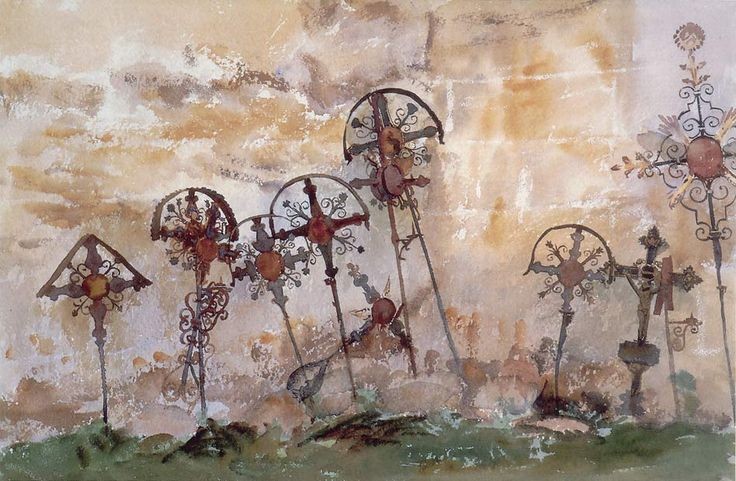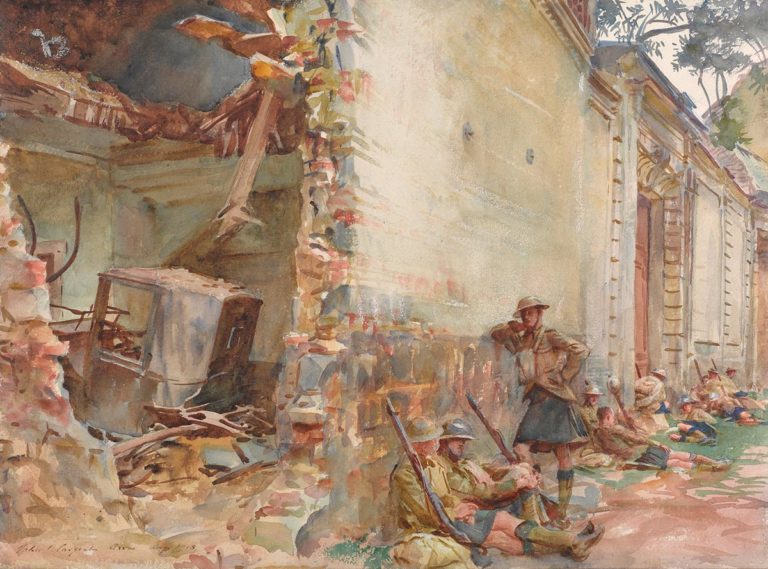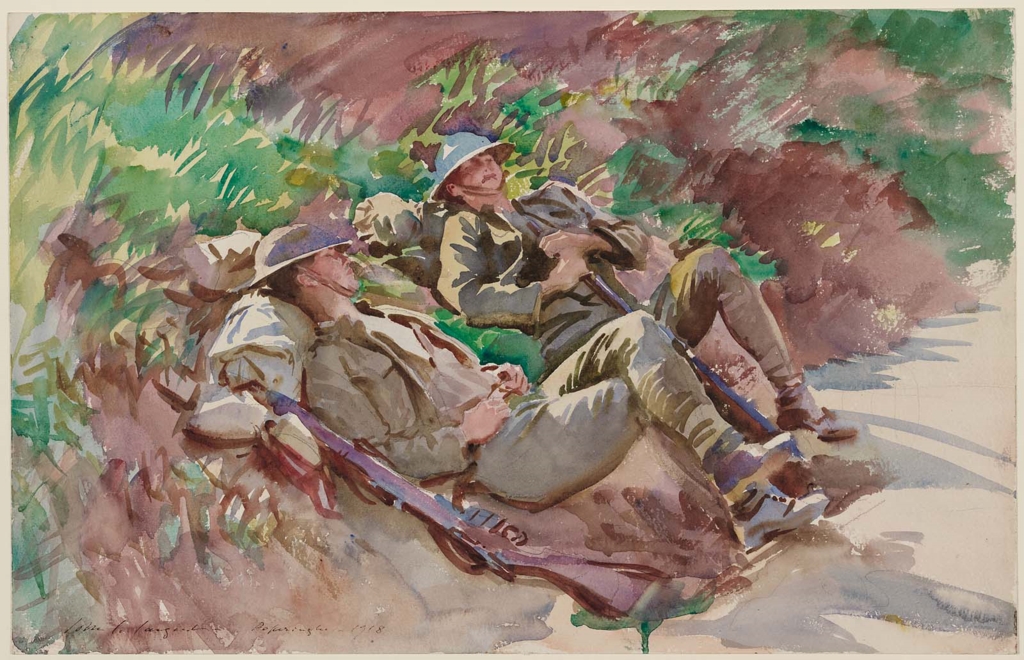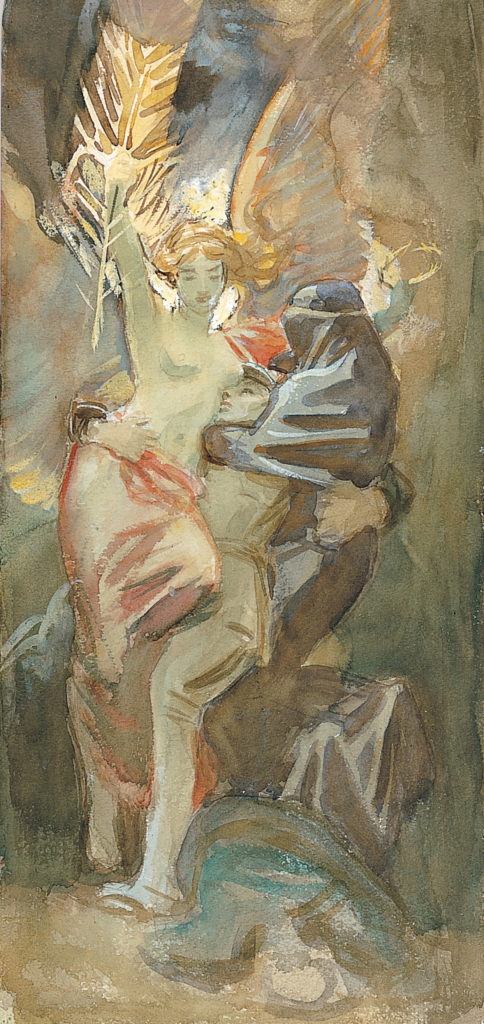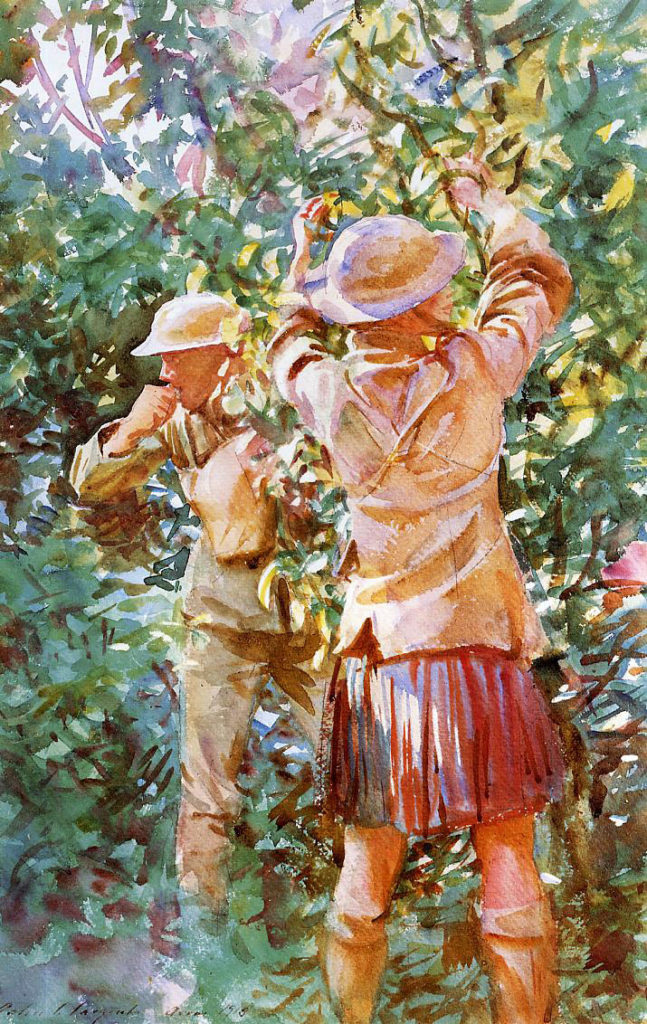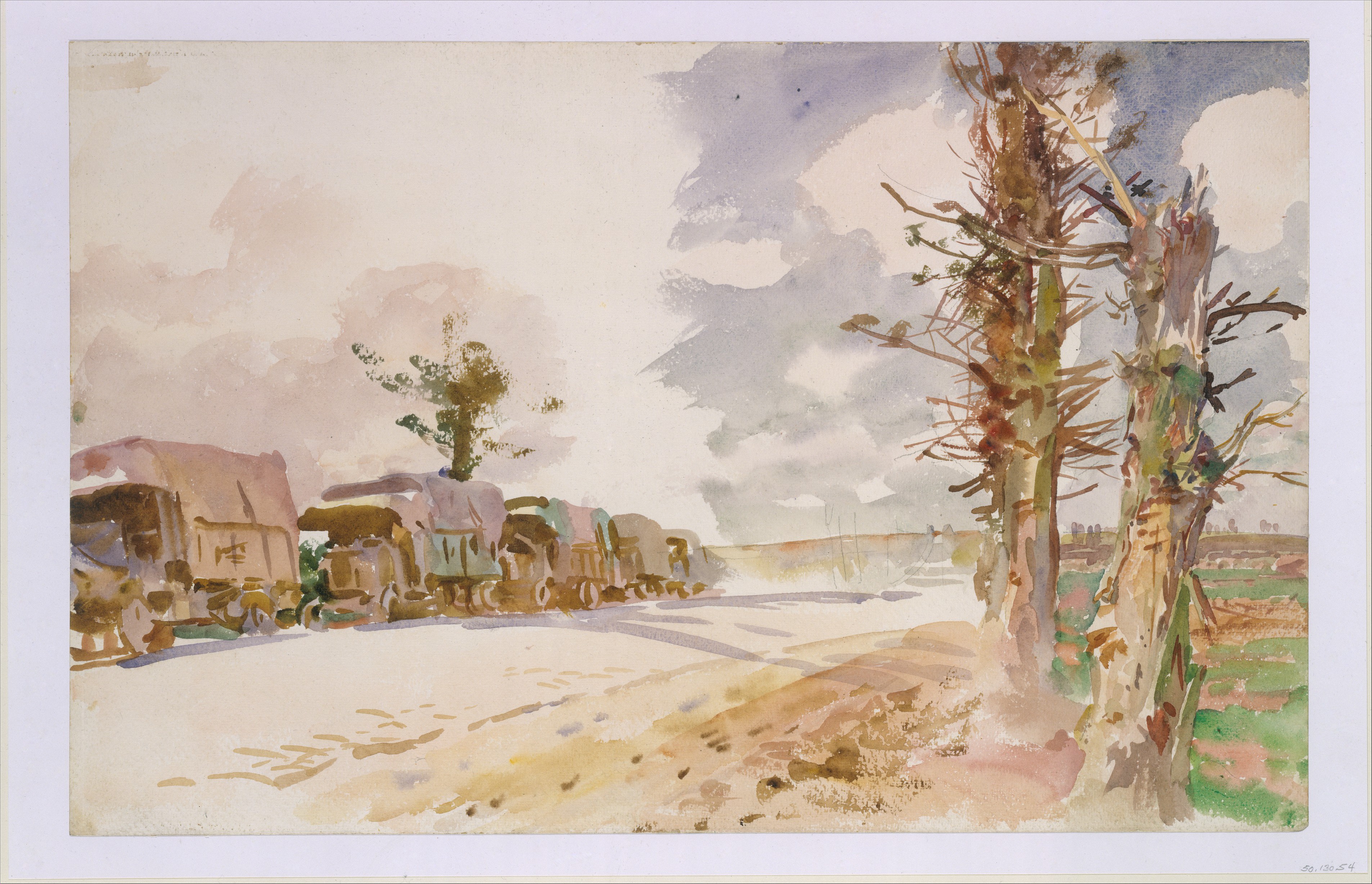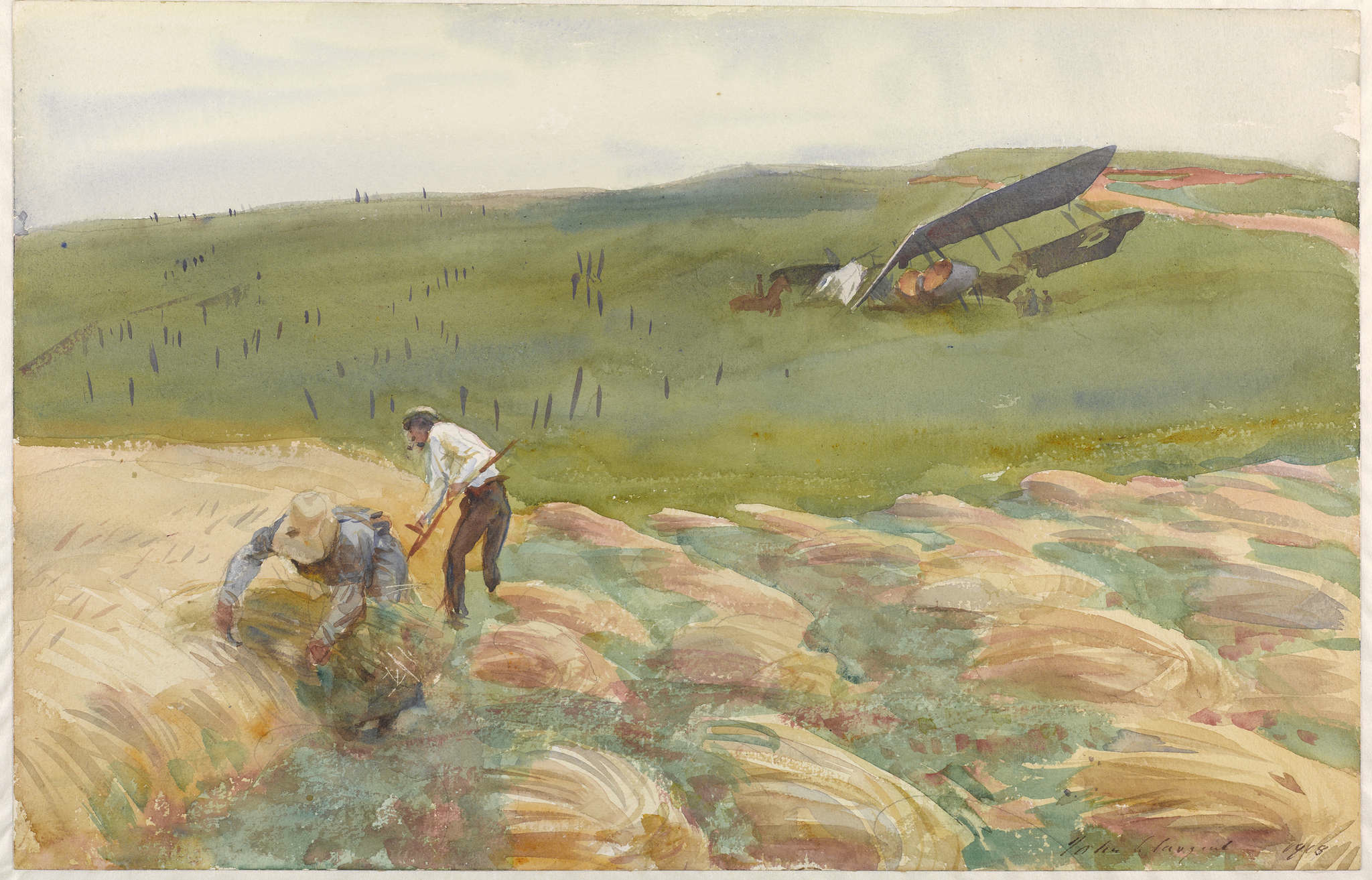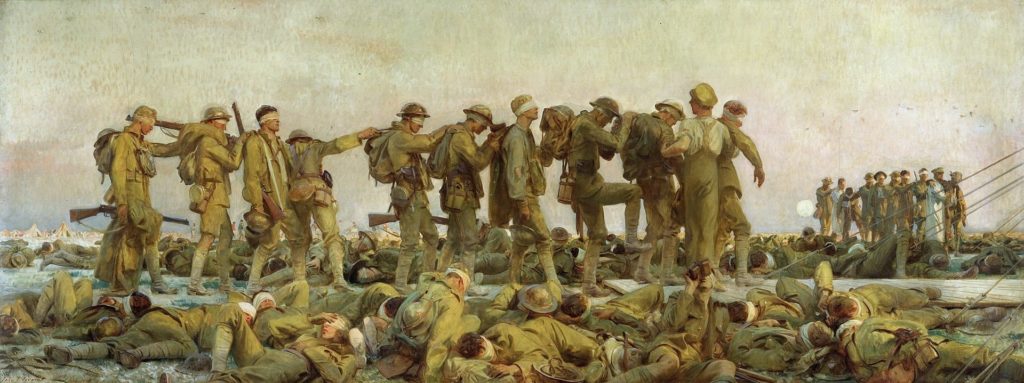Sargent Chronicles World War I
John Singer Sargent was 62 when he went to paint what was to be called, “The Great War”.
In 1918, one of the greatest painters of the Western World was dispatched to the Western Front to gather some artistic impressions of Western Civilization gone mad.
“Best known for his bravura society portraits and dazzling, sun-filled watercolors, the cosmopolitan American painter John Singer Sargent (1856–1925) might seem an unlikely candidate to document the Great War.”
In truth, Sargent was sent to “commemorate the joint efforts of American and British troops for a proposed Hall of Remembrance. He ultimately abandoned his assigned theme, choosing instead to depict the impact of modern chemical warfare.”
“Gassed (above)—an epic, frieze-like composition depicting soldiers blinded by mustard gas being led to treatment—was based on a scene that he had witnessed at Le-Bac-du Sud on the Arras-Doullens Road in August 1918. Along the side of the road, hundreds of injured soldiers convey the devastating human toll and horrific scale of the war.”
Undoubtedly a compilation of images and allusions (including “The Parable of the Blind” by Pieter Brueghel the Elder), Gassed sets the unrealized potential of these young men and the agonizing terror technology has inflicted upon them in sharp relief, turning the time-honored routine of war into a ghastly apparition. This is a mad world gone madder.
Sargent’s painting turns the time-honored routine of war in to a ghastly apparition. This is a mad world gone madder.
After surveying the unbelievable carnage at one battle scene, Sargent is said to have turned to one of the Majors in the detail and quipped, “Well, I guess you guys quit for a rest on Sunday?” “Oh yes”, the officer confirmed.
Quotes courtesy of THE-MET.
John Singer Sargent was not a gloomy painter. But these are gloomy portraits. They are also dismal landscapes. General Officers of World War I — a nearly 20 foot wide expanse of Generals — is not for the faint of heart, or for lovers of color, as was Sargent.
Another not so pretty picture is Gassed, measuring in at over 20 feet. Twenty feet of gloom. It is nearly monochromatic, variations on a theme of brown—with green and red added here and there. Opposing olives and violets provide an unsettling mix. Francisco José de Goya could’ve painted this picture on one of his sadder days.
“General Officers” is much the same with “22 men in khaki uniforms standing like pillars in a crowd in front of an anonymous brownish void, possibly an open doorway, with the bases of fluted pillars to either side. Sargent described it as ‘painting them all standing up in a vacuum’. They look forward with blank stares, with no discernible purpose, almost as if each was unaware of the others around him. Sargent himself foresaw a ‘Horrible failure. The resulting painting is unsatisfactory'”. [Wikipedia]
Sargent painted the “The Great Generals” long after The Great War had ended—and after he had had time to ruminate over just what it was he had witnessed. “Generals” is less a representation of a group of individuals than it is a mood, a theme, a painting of an anonymous vacuum of consciousness. The scene is cast in the same depressing, brown tones of despair. And what—is that a ‘black hole’ opening up above these icons of war?
Gassed is a-typical of Sargent’s body of work—that of fresh, lively and colorful bravura. He did not subscribe to Goya’s brown-based, dark style. Perhaps he was intimating it here with these subjects, referring to the past—the old ways, the old customs. The old madness, revealed again in this nightmarish landscape of men hobbling around like ghosts. It must have been tedious, if not painful, to paint such a dirge.
This painting chronicles an event with color as much as form. The color mix is confusing, disorienting, relaying a sense of something these blind, young men must have felt.
Structurally, there are three composition layers (Detail). The men lying in the immediate foreground; the men being led in the background; behind them, a third layer of war: the aeroplanes above, like little dragonflies hovering around on a stale day.
The setting sun provides light from the right as the rising moon follows the men—surrounded by a faint, violet haze, again, an opposing pigment. Surely one of the most dismal landscapes ever concocted. Or chronicled.
At the dawn of the 20th century the Art World was ablaze with color, as represented by the works of two great artists of the day, August Macke and Franz Marc (both would be killed in the war). Sargent himself had demonstrated an unrivaled mastery of pigment. Though, Gassed and “The Generals” are colossal commentaries in red and green and brown.
13 million civilians would die in WWI — along with 9 million soldiers. The ‘War To End All Wars’ in fact did not. An even greater disaster followed. The subject of these paintings, impeccably drafted, is but the stage. The colors are the story, a story of misery and pain in an “anonymous, brownish void”.

